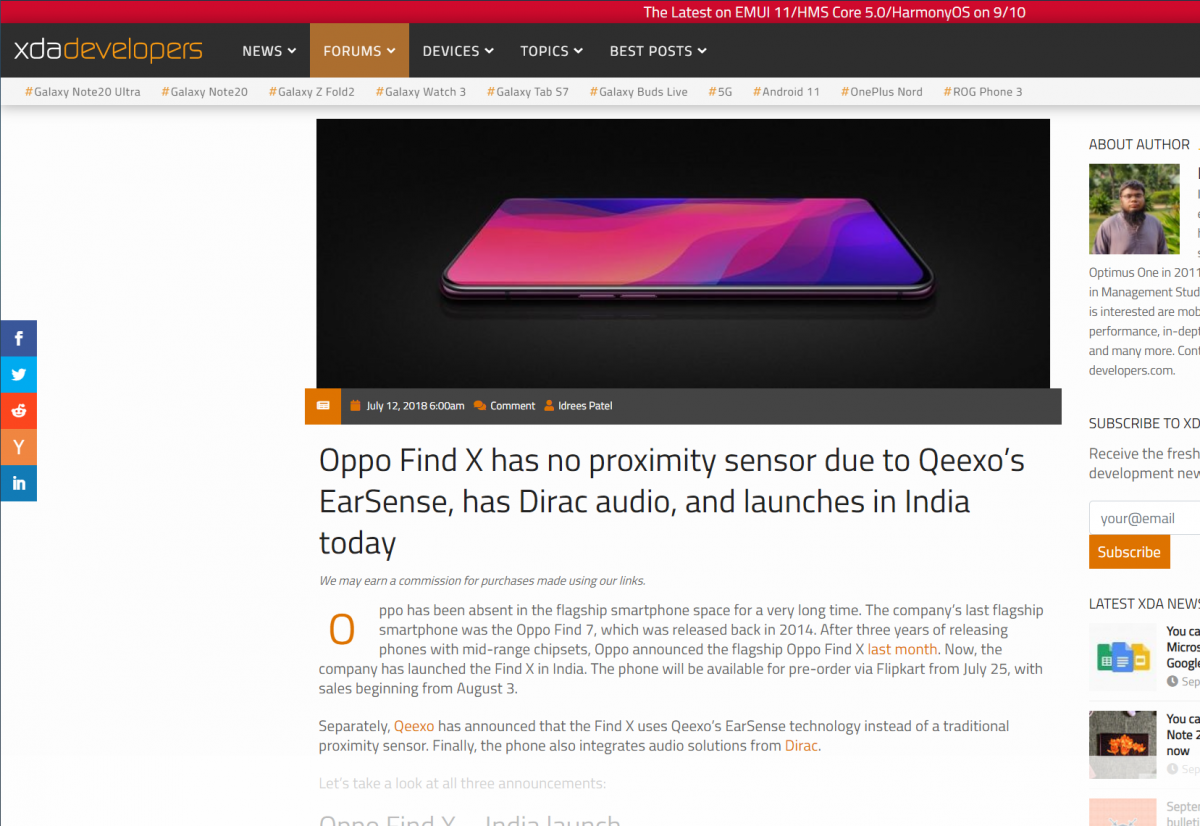Qeexo EarSense uses AI to bring true bezel-less designs to OPPO smartphones
July 12, 2018; Mountain View, CA – Qeexo, developer of lightweight machine learning and AI solutions for sensor data, announces a partnership with smartphone and consumer electronics manufacturer, OPPO, to bring Qeexo’s EarSense technology to the OPPO Find X smartphone. EarSense is Qeexo’s state-of-the-art AI solution that allows for true bezel-less design. It replaces the traditional hardware proximity sensor on smartphones, allowing devices to turn off the screen during phone calls.
Traditional hardware proximity sensors, which allow devices to turn off the screen during phone calls, must be placed at the top of the smartphone, requiring devices to be made with bezels or notches. EarSense is the first software-only AI solution to replace the traditional hardware proximity sensor and was built upon the same AI platform as Qeexo’s FingerSense, which has already been deployed on over 120 million devices. EarSense’s proprietary AI algorithms identify a person’s face and ear when they are near or touching the screen, letting the device turn off the screen during a call – just like a hardware proximity sensor. By eliminating the need for a physical proximity sensor, EarSense finally gives manufacturers the freedom to remove top bezels and notches from smartphones and create more beautiful and imaginative designs.
“The footprint of a traditional proximity sensor makes it very difficult for manufacturers to design around, resulting in the unpleasant notches you see on many smartphones today,” said Sang Won Lee, CEO of Qeexo. “In addition, other existing proximity sensor replacement solutions are incredibly costly and perform poorly. EarSense overcomes these limitations, allowing for bezel-less and notch-less designs with high-performance ear and face detection. We’re thrilled to work with OPPO, a leader in the smartphone industry, to help them realize their design ambitions.”
To view a demo of EarSense, go to: https://www.youtube.com/watch?v=VgbyW_5gdvo.
About Qeexo
Qeexo develops machine learning and AI solutions that generate actionable insights from sensor data. The company works with leading device OEMs and component manufacturers to power beautiful designs and novel user experiences on over 100 million devices worldwide. In industries such as mobile, IoT and automotive, there are billions of devices where computation and memory are highly constrained. Qeexo’s proprietary, low-latency, low-power models are engineered to have an incredibly small footprint – ideal for making high-accuracy predictions in these environments.
Spun out of Carnegie Mellon University, Qeexo is venture-backed and headquartered in Mountain View, CA, with offices in Pittsburgh, Shanghai, Shenzhen and Beijing. To learn more, visit www.qeexo.com.
For further information, please contact:
Qeexo
Lisa Langsdorf
+1 347-645-0484
lisalangsdorf@gmail.com



